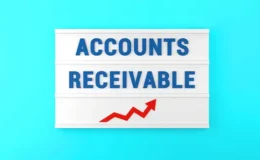What do you need to qualify for a loan? If you’re like many business owners, the first thing that comes to mind is probably your credit rating. A great credit score is essential with traditional loans, but not for alternative financing options. With asset-based lending, you can get approved even if you have a relatively low credit rating. The important thing is to have available collateral.
What Asset-Based Lending Involves
As you may have guessed, asset-based loans revolve around business assets. Your business may have many valuable assets available, such as real estate, heavy machinery, work equipment, diagnostic systems, specialized tools, and other items. Transportation equipment, such as flatbed trucks, semi-trucks, and delivery vehicles are assets, too.
Inventory is another type of asset. So are raw materials. With specific types of alternative financing called factoring, you can even use unpaid invoices as a source of collateral.
By placing your business assets as collateral for a loan, you’re utilizing them as a source of security. This guarantee tells the lender that you’re committed to paying back the loan. Traditional loans may also use collateral, but assets are especially important in alternative financing. Put simply, instead of requiring excellent credit ratings, lenders are willing to offer a loan based exclusively on the value of your collateral.
How Much Funding You Receive
When you get started with asset-based lending, there are several terms you need to understand. Collateral is the most important. Another term is called loan-to-value ratio. This is a percentage that tells you how much money you can receive based on the current value of your business asset.
Many lenders provide LTV ratios of around 70%. In the case of invoice factoring, the amount can be higher. A loan with an LTV of 70% means that you receive 70% of the item’s value as capital. For example, if you use a piece of construction equipment worth $100,000 to apply for an asset-based loan, you could receive $70,000.
Many real estate businesses use this option, but instead of choosing property they own as collateral, they use the property they want to purchase. This is a valid option, and it works for equipment financing, too. The idea is to obtain a loan quickly and easily.
How To Get Started
Applying for asset-based lending isn’t difficult. You mainly need documentation related to your collateral. Gather information about assets you own or equipment/real estate you want to purchase. Then, fill in the application.





